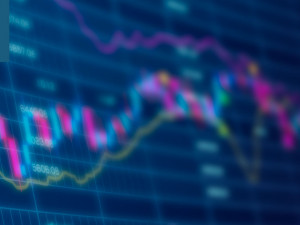
Talk of a rate cut a little premature
Morning mid-market rates – The majors
13th January: Highlights
- Second MPC member also “inclined” towards a rate cut
- Another employment “curveball”
- Eurozone reaching an inflection point?
Election/Brexit bounce still uncertain
Silvana Tenreyro, followed her current boss the Governor of the Central Bank in predicting that a rate cut may be necessary should the economy continue to struggle to grow at the desired rate.
The counter view is that the significance of the election result has so far not been taken into consideration. That will bring into focus the activity data which will be released later this morning. Manufacturing production is predicted to fall by 1.6% and industrial production by 0.2% following a 1.2% fall in manufacturing last month and a small rise in industrial production.
While Brexit talks over trade and other “ancillary” issues are about to begin and the country gets “back to normal”, it is considered unlikely that the bank will move on rates just yet.
The current Deputy Governor, Sam Woods has been reported in the newspapers this weekend as being surprised that there has not been a greater consolidation in the banking sector. He has predicted that the regulator will start to look in greater detail at liquidity and lending ratios. This could easily create further mergers. Having said that, there is significant foreign investment in the domestic banking sector which may muddy the waters.
With the Brexit Withdrawal Agreement having cleared the House of Commons last week, it remains to be seen just how long reaching an agreement over trade will take.
Last week, the pound fell overall to a low of 1.3013, closing at 1.3056. The 1.30 level remains a significant support and there are large buy orders from funds and corporates at and just below that level.
Considering your next transfer? Log in to compare live quotes today.
What constitutes ”full employment”
There will always be concerns expressed about moving averages and the overall rate from those who see the need for further stimulation from the Federal Reserve. However, the 145k new jobs created in December is no cause for alarm in the markets or likely to change the steady as she goes policy of the Central Bank.
In the recent past, an unemployment rate of <5% was considered to be full employment as those who cannot or will not find employment make up roughly that percentage. The total new jobs created in 2019 just about reached 2.1 million. This was just a little below the 2018 figure but is no cause for concern at this stage of the cycle, particularly since the Fed has admitted to seeing a soft spot which led to the Autumn rate cuts. Wages grew by 2.9% in 2019. This is well below the 3.2% seen in 2018 and points to tightening labor market. The Fed is concerned about the fall in wage growth but under Jerome Powell, there has been a considerable growth in the Bank’s understanding of the market which has allowed Powell to appear sanguine while studying every aspect of the economy. President Trump’s “masterstroke” received a huge boost by Iran’s admission that it was their Revolutionary Guards who shot down a Ukrainian Airlines plane this week. Trump’s assertion that the Iranian Government is “standing down”, may just be true. Last week, the dollar index was volatile but rose overall to a high of 97.37, closing a little lower at 97.10
Current degree of optimism wishful thinking?
No matter what activity indexes are showing, confidence seems to remain high and is, in fact, becoming more positive.
The currency remains in the thrall of the dollar but while it possibly hasn’t fallen quite as far as it could given the issues the Eurozone faces, the topside betrays the markets belief that the balance of risks is certainly to the downside.
It is an odd outcome but there is almost a feeling that the size of the market and the amount of liquidity means that any fall is unlikely to be too severe.
Traders await a degree of positivity from the ECB following the appointment of Christine Lagarde, but until the issue is decided politically, the finances of the region will remain pressured.
The euro fell to a low of 1.1085, closing at 1.1121.

About Alan Hill
Alan has been involved in the FX market for more than 25 years and brings a wealth of experience to his content. His knowledge has been gained while trading through some of the most volatile periods of recent history. His commentary relies on an understanding of past events and how they will affect future market performance.”



